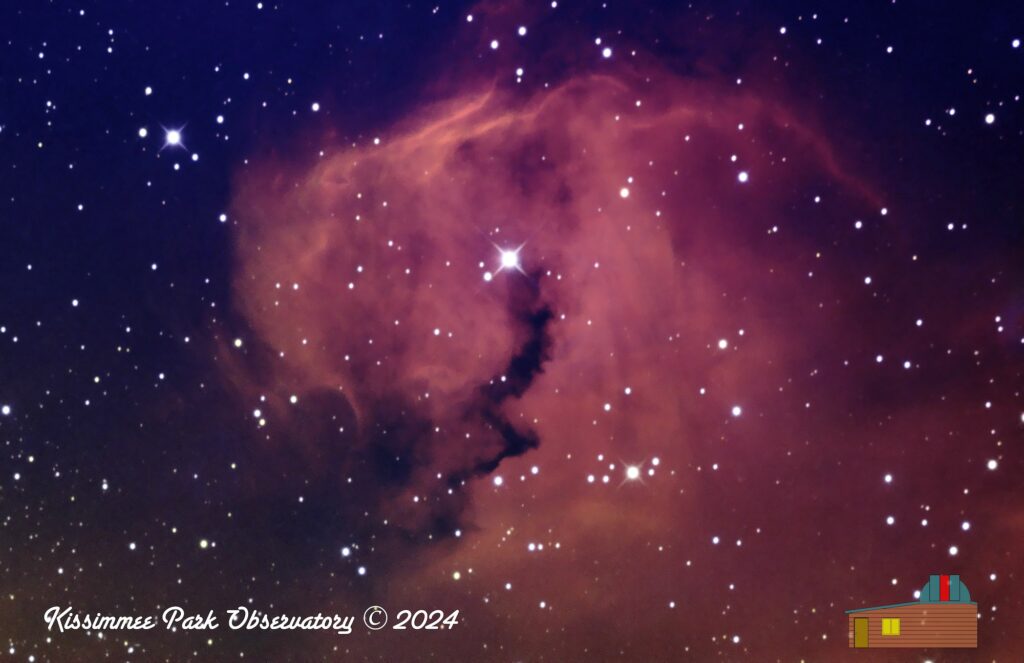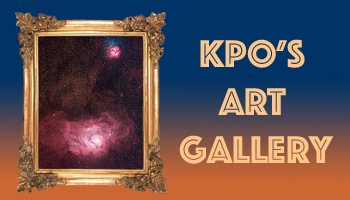
LDN 1657 – The “head” of the Seagul Nebula, taken with the RC-12 astrograph in the KPO dome. HSO image with 6 hours total integration time.
The Enchanting Seagull Nebula: A Celestial Delight
Deep in the heart of the constellation Canis Major, there lies an ethereal wonder that has captured the hearts and imaginations of stargazers for centuries. Known as LDN 1657, or more affectionately, the Seagull Nebula, this cosmic cloud is a breathtaking sight to behold.
The Seagull Nebula owes its name not only to its distinctively bird-like shape but also to its location in the night sky. It appears near the bright star Sirius, which lies at the head of Canis Major, the Greater Dog constellation. This celestial beauty has been delighting observers since its discovery in 1916.
What makes LDN 1657 so special is its unique combination of color and texture. The nebula’s reddish hue is created by the presence of glowing hydrogen gas, a byproduct of young stars nestled within its folds. These fledgling stars are in the process of forming, their intense radiation illuminating the surrounding gas and dust.
The Seagull Nebula also boasts an intricate pattern of dark lanes and wispy tendrils that give it a striking visual appeal. These features are formed from dense clouds of interstellar dust and gas, which act as filters, blocking some wavelengths of light while allowing others to pass through. This phenomenon creates the illusion of shadows and depth within the nebula.
As we peer into the heart of LDN 1657, we gain a glimpse into the early stages of star formation. The nebula’s central region is home to several young stars, still wrapped in cocoons of gas and dust. These celestial giants are in the process of evolving, their immense energy shaping the surrounding environment.
Observing the Seagull Nebula can be a humbling experience. It serves as a reminder that our planet is but a tiny speck within the grand tapestry of the universe. As we continue to explore the mysteries of space, the LDN 1657 Seagull Nebula stands as an enduring testament to the awe-inspiring beauty and complexity of our cosmos.
Tap on the image to view a larger version.
Image Info
- Imaged from the Kissimmee Park Observatory, in Saint Cloud, Florida
- Camera : ZWO ASI2600MM Pro
- Scope: Orion RC-12 Ritchey-Chretien Astrograph, 2450mm fl, F/8
- Mount: iOptron CEM-120
- Hydrogen Alpha: 33 subframes of 300s = 165 min integration
- Oxygen III: 24 subframes of 300s = 120 min integration
- Sulphur II: 15 subframes of 300s = 75 min integration
- Total integration time: 360 min = 6 hours.
- Captured via ASIAir Pro automation
- Optical tracking via ASIAir automation via the ASI174mm Pro guide camera
- Separate channels stacked and SHO4 integrated in Astro Pixel Processor
- Image run through Super DeNoising
- Final processing in Aperture

